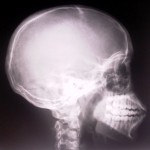Preventing and Treating Gout Naturally
Sunday, April 18th, 2010Gout is a condition which causes pain, redness and swelling in a joint, usually a toe or foot, although any joint can be affected by gout. Gout is caused when uric acid crystals form in the joint after being deposited from the bloodstream. Uric acid results from the breakdown of purines; therefore, eating foods that are low in purine decreases uric acid in the bloodstream and prevents gout (or so the theory goes).
- For people attempting to eat a diet which is low in purine, the following tips may be helpful:
- Cider vinegar is thought to lower uric acid levels
- Drinking lots of water helps to flush uric acid from the body, as does eating a diet high in fiber
- Eat foods high in vitamins E and C, supplement with vitamins if your diet is deficient in either of these
- Avoid: cauliflower, mushrooms, asparagus, red meat, shell fish, poultry, mackerel and sardines, as these foods are high in purine
- Cherries, blueberries and strawberries are good for gout
Repeated attacks of gout may lead to permanent joint damage, therefore purines should be avoided as much as possible. Medications to treat gout once it has flared are available, but some have unwelcome side effects. Prevention of gout is preferable to treatment of gout.
PreArthos is an all-natural botanical formulation designed to treat joint pain safely, with no side effects.





